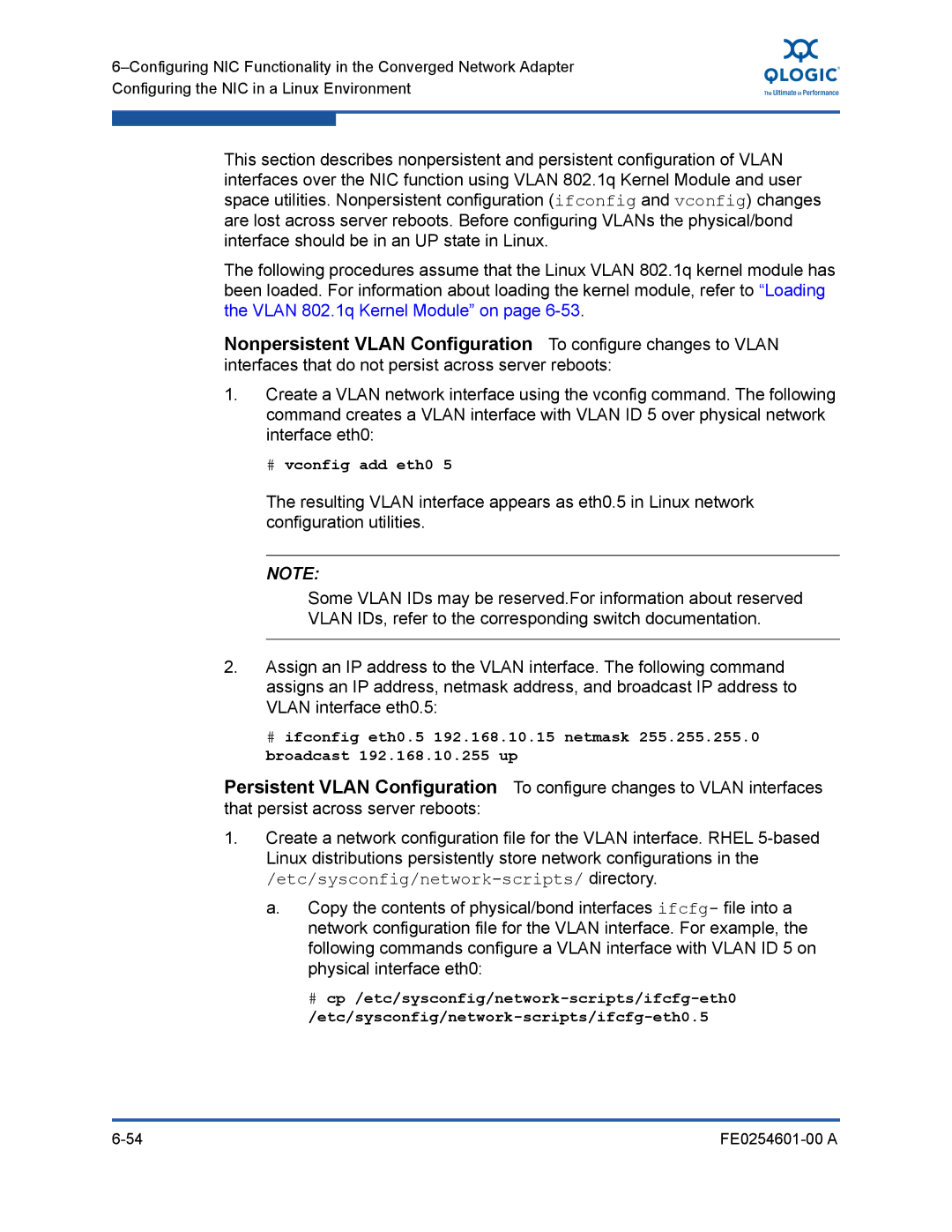
This section describes nonpersistent and persistent configuration of VLAN interfaces over the NIC function using VLAN 802.1q Kernel Module and user space utilities. Nonpersistent configuration (ifconfig and vconfig) changes are lost across server reboots. Before configuring VLANs the physical/bond interface should be in an UP state in Linux.
The following procedures assume that the Linux VLAN 802.1q kernel module has been loaded. For information about loading the kernel module, refer to “Loading the VLAN 802.1q Kernel Module” on page
Nonpersistent VLAN Configuration To configure changes to VLAN interfaces that do not persist across server reboots:
1.Create a VLAN network interface using the vconfig command. The following command creates a VLAN interface with VLAN ID 5 over physical network interface eth0:
# vconfig add eth0 5
The resulting VLAN interface appears as eth0.5 in Linux network configuration utilities.
NOTE:
Some VLAN IDs may be reserved.For information about reserved
VLAN IDs, refer to the corresponding switch documentation.
2.Assign an IP address to the VLAN interface. The following command assigns an IP address, netmask address, and broadcast IP address to VLAN interface eth0.5:
# ifconfig eth0.5 192.168.10.15 netmask 255.255.255.0 broadcast 192.168.10.255 up
Persistent VLAN Configuration To configure changes to VLAN interfaces that persist across server reboots:
1.Create a network configuration file for the VLAN interface. RHEL
/etc/sysconfig/network-scripts/ directory.
a.Copy the contents of physical/bond interfaces ifcfg- file into a network configuration file for the VLAN interface. For example, the following commands configure a VLAN interface with VLAN ID 5 on physical interface eth0:
#
|
